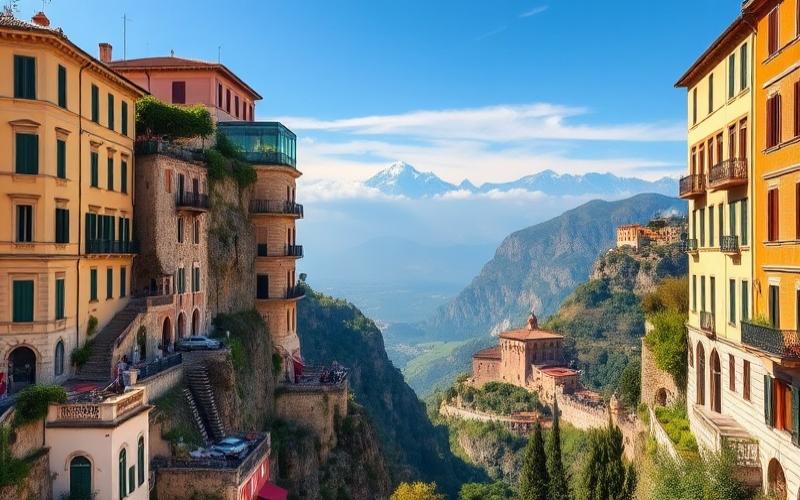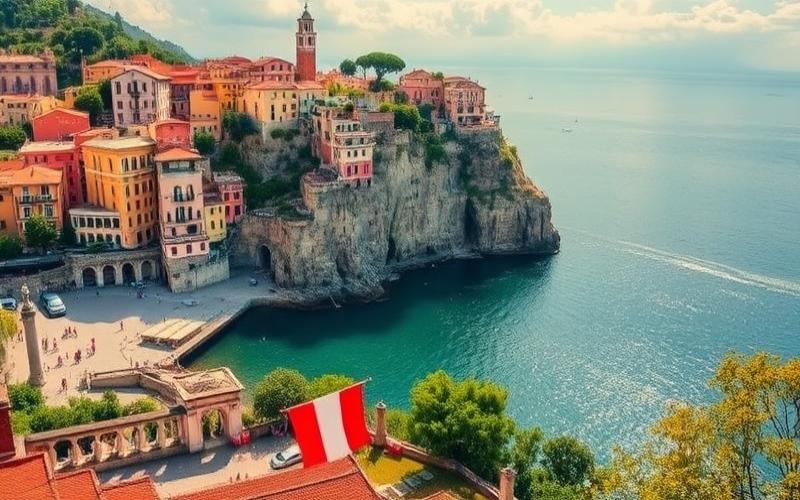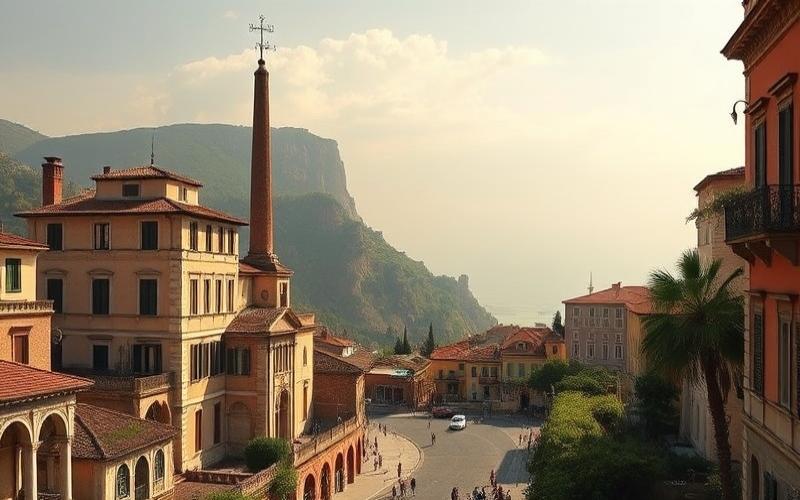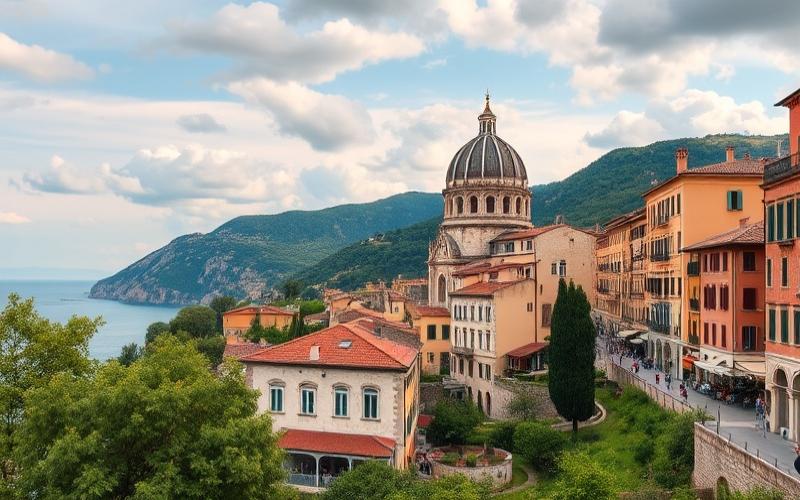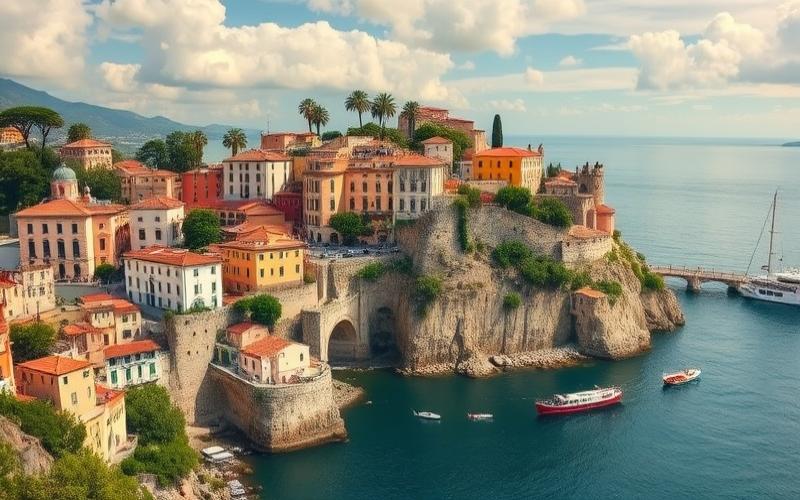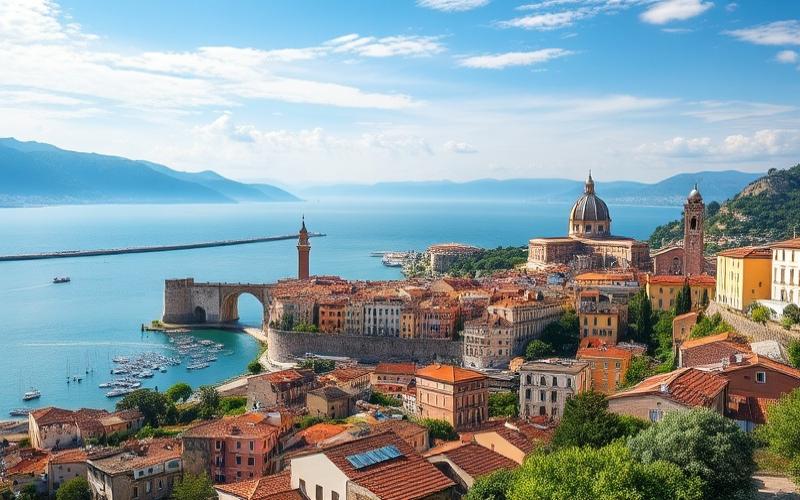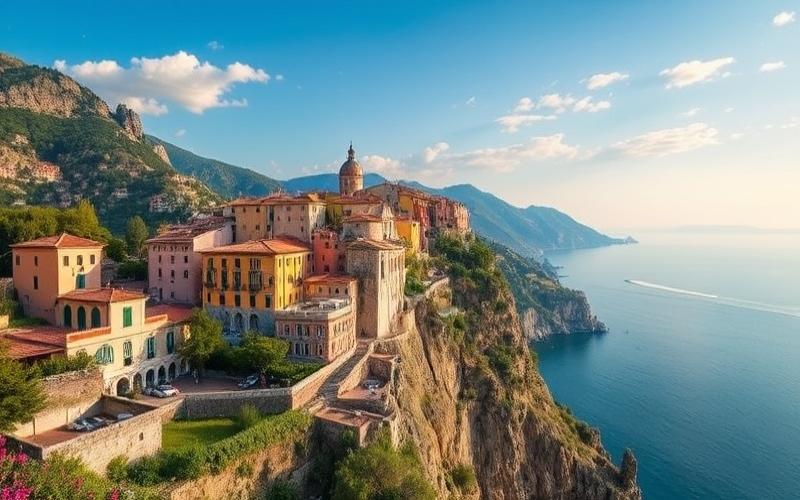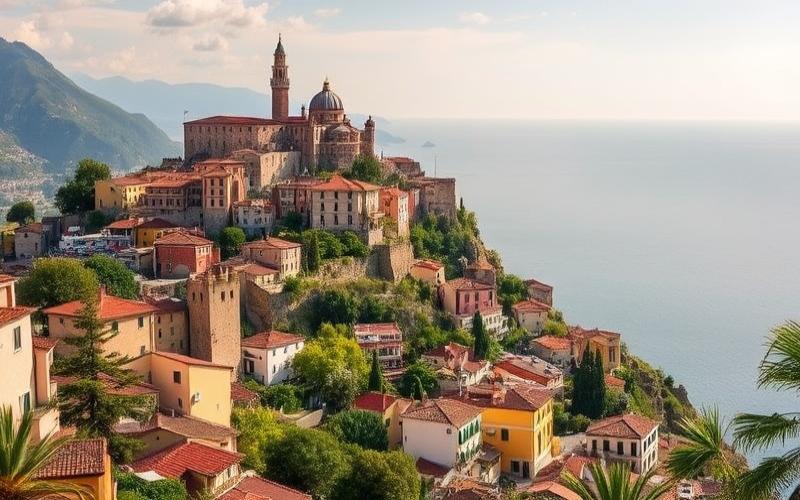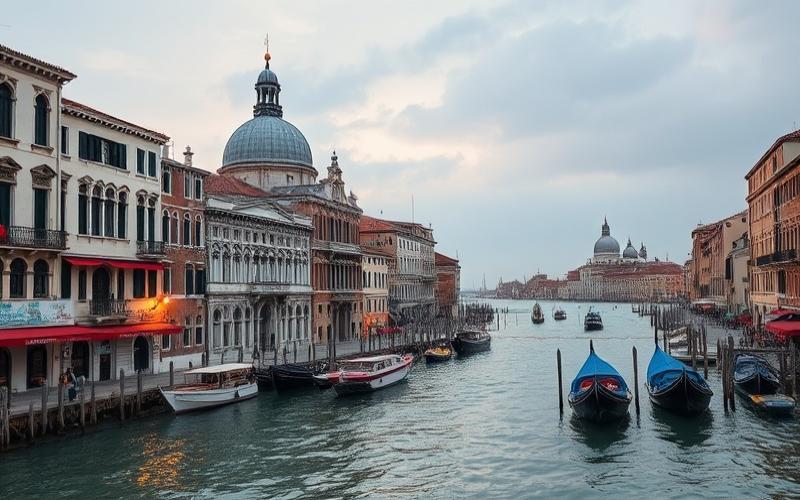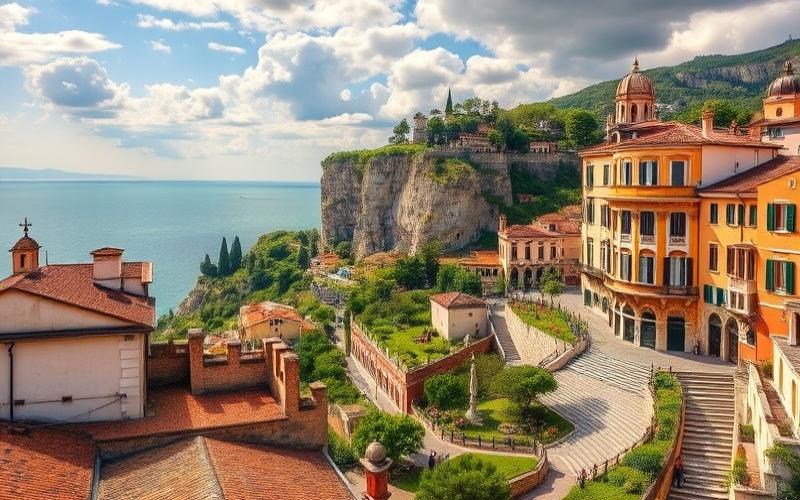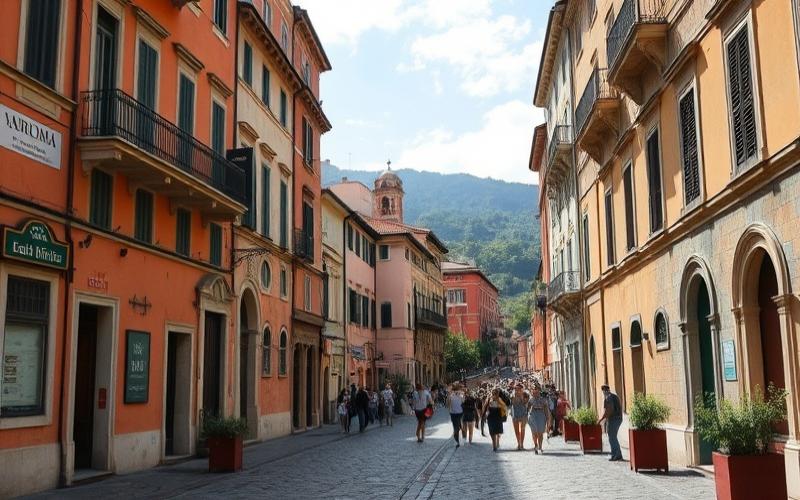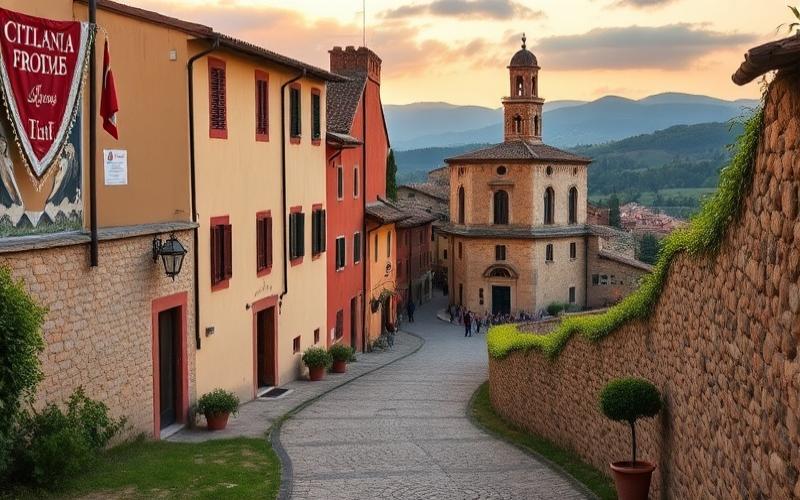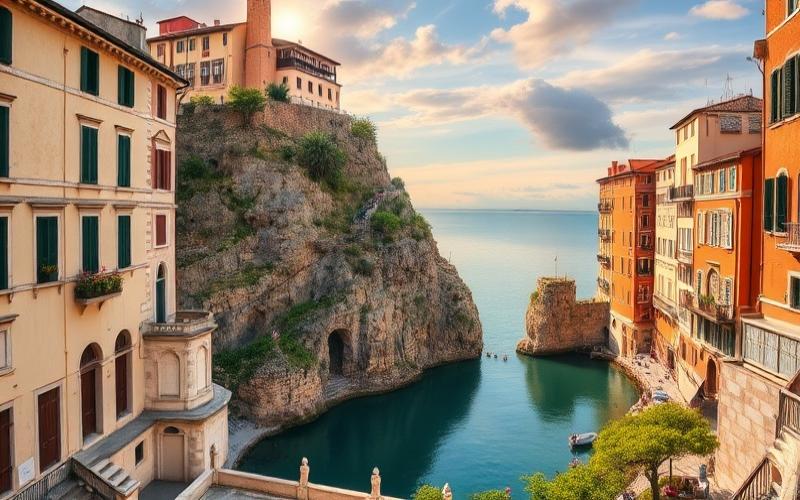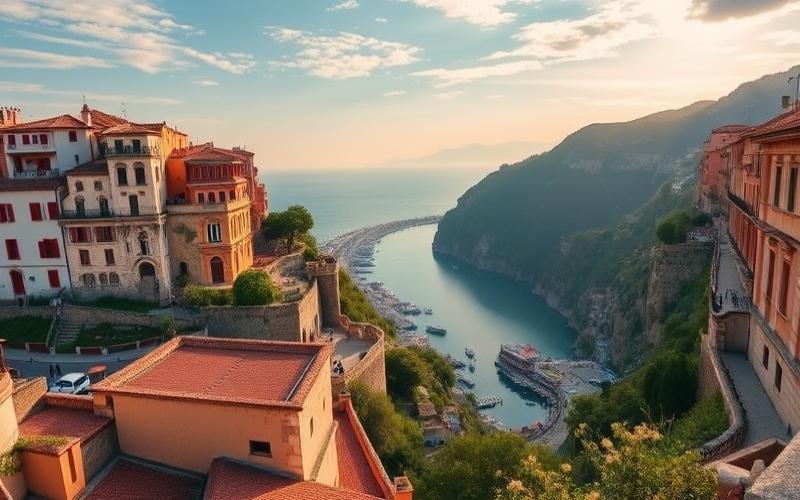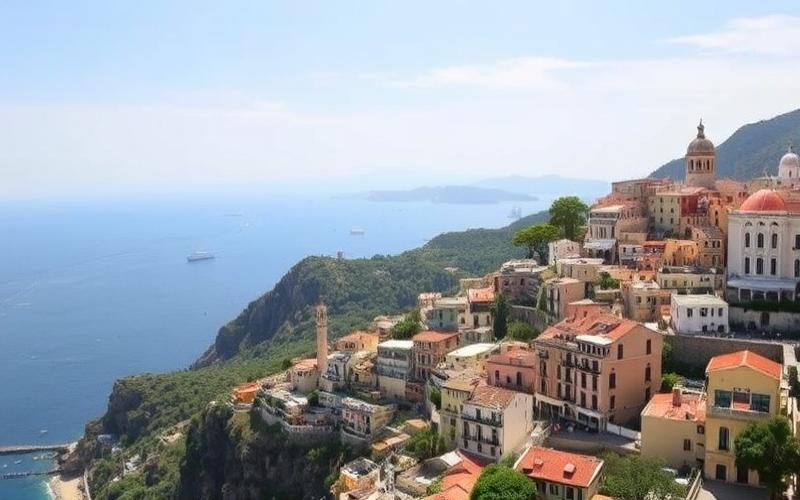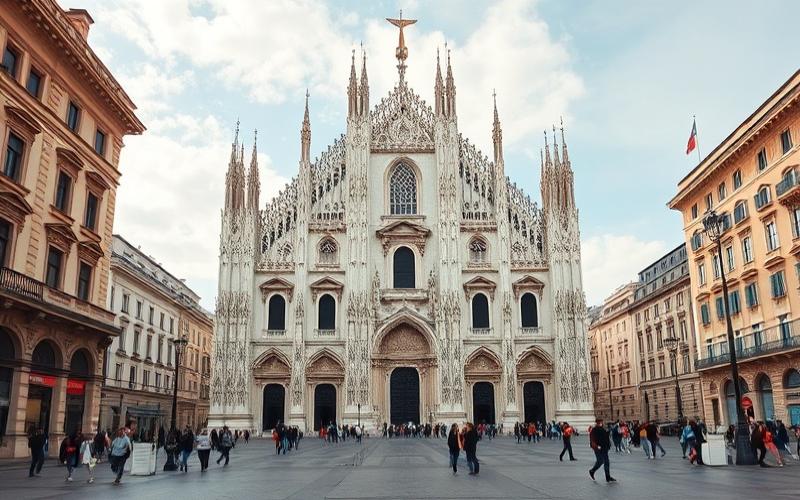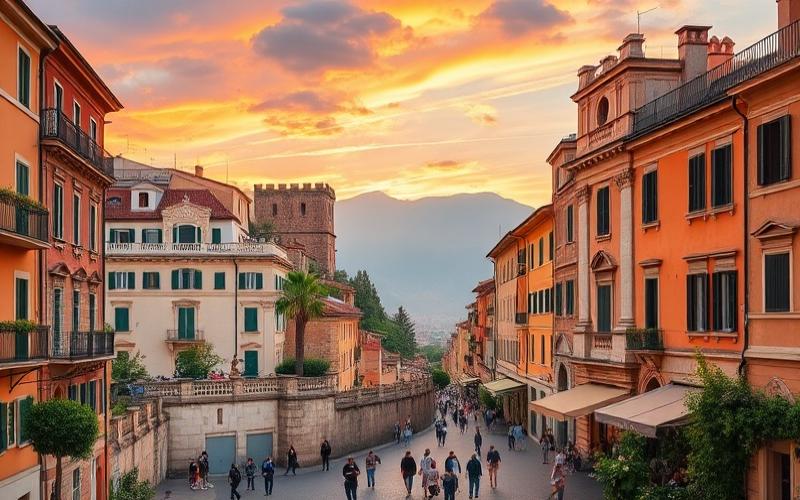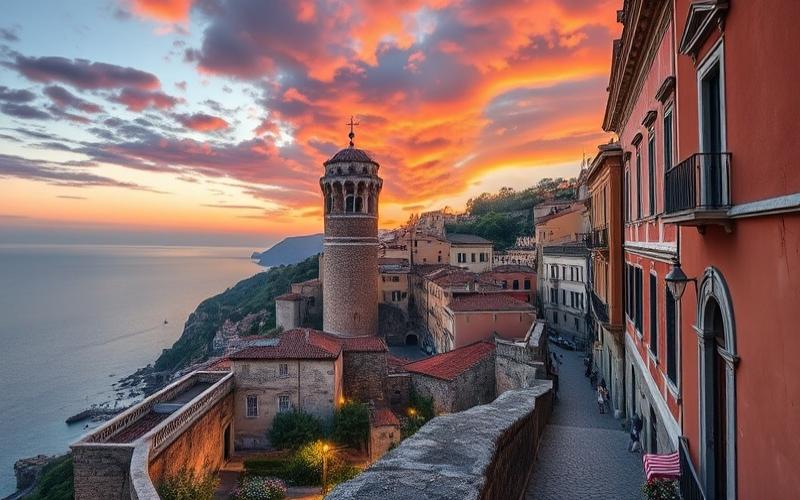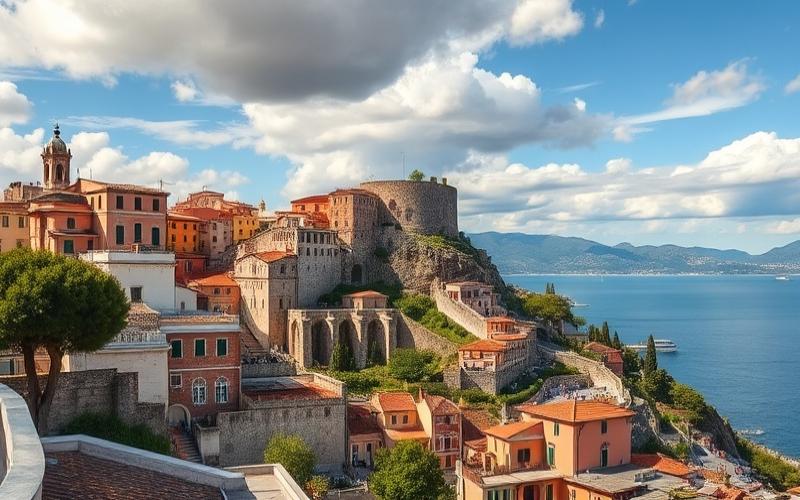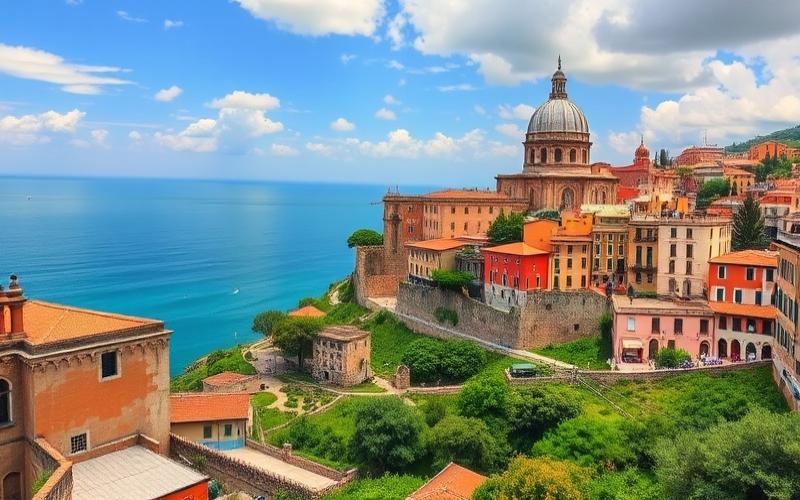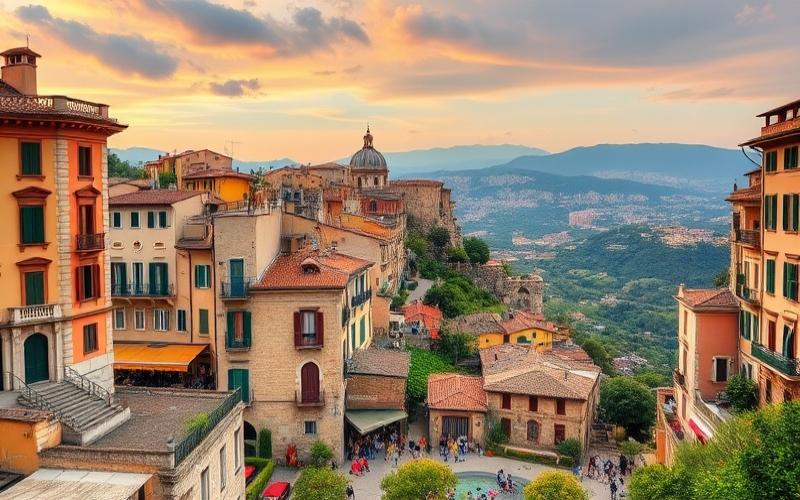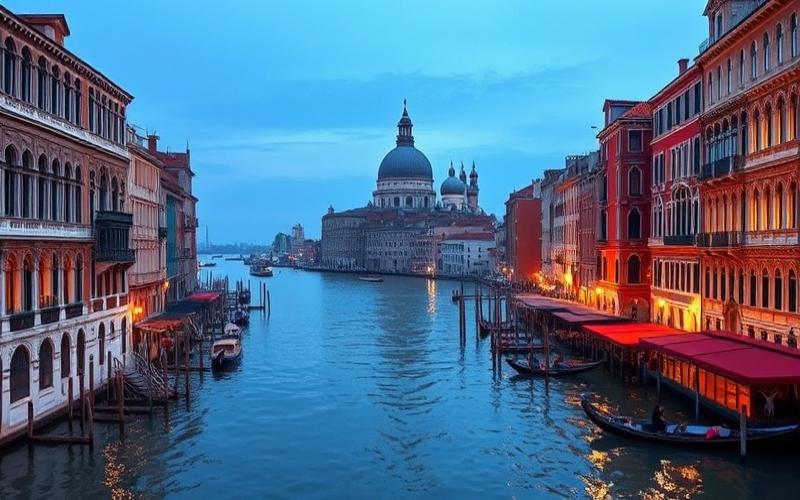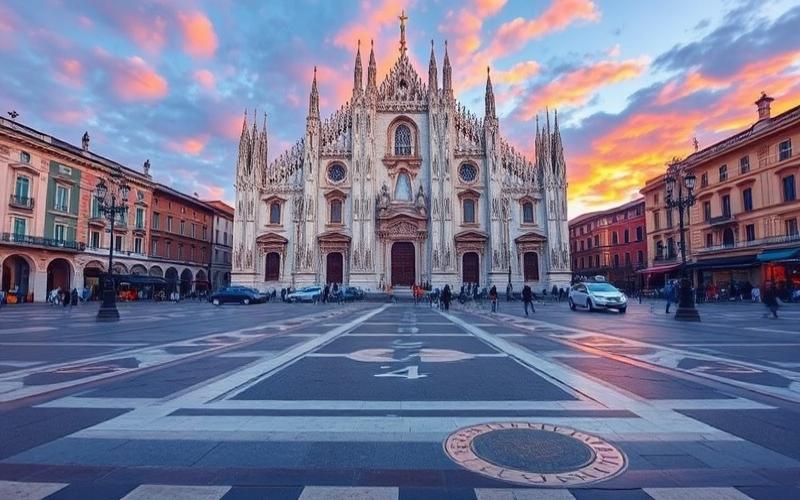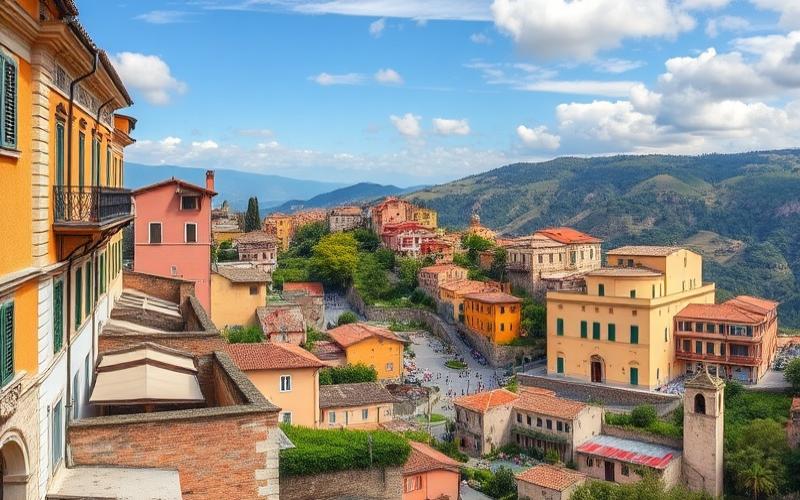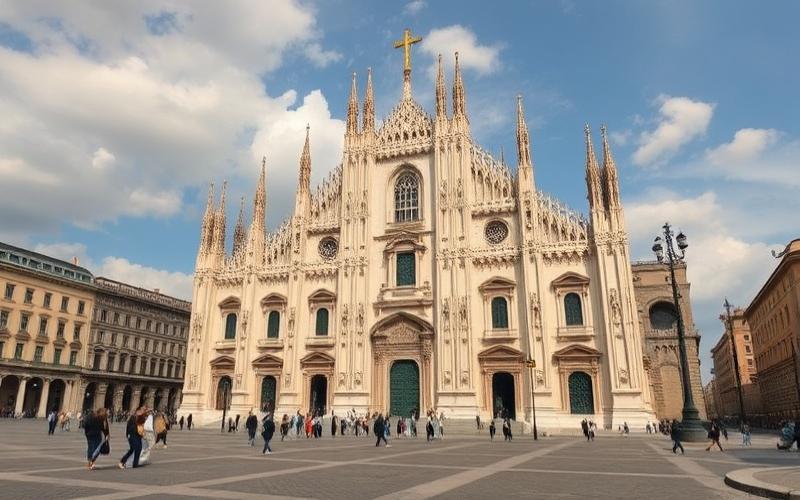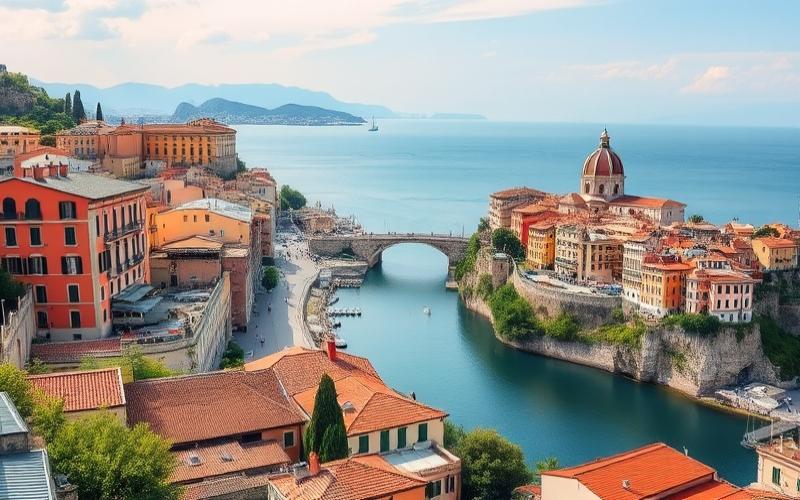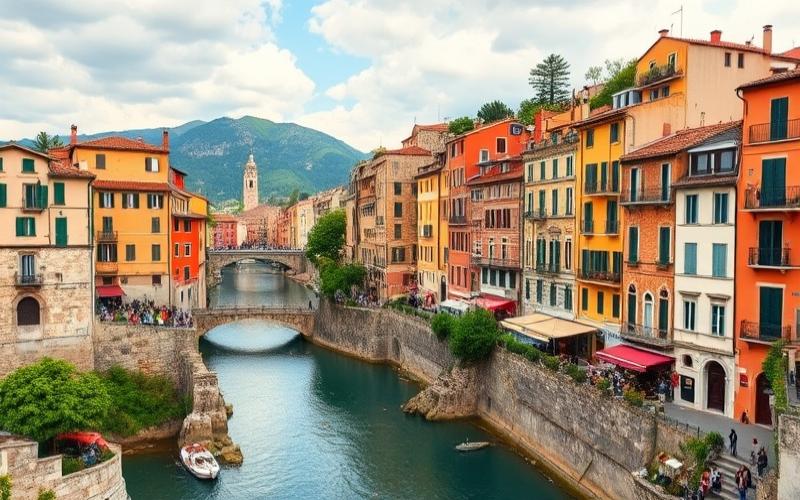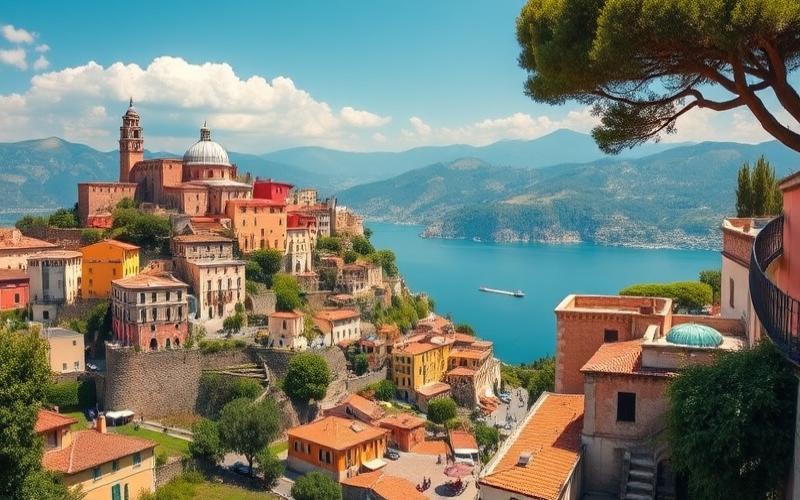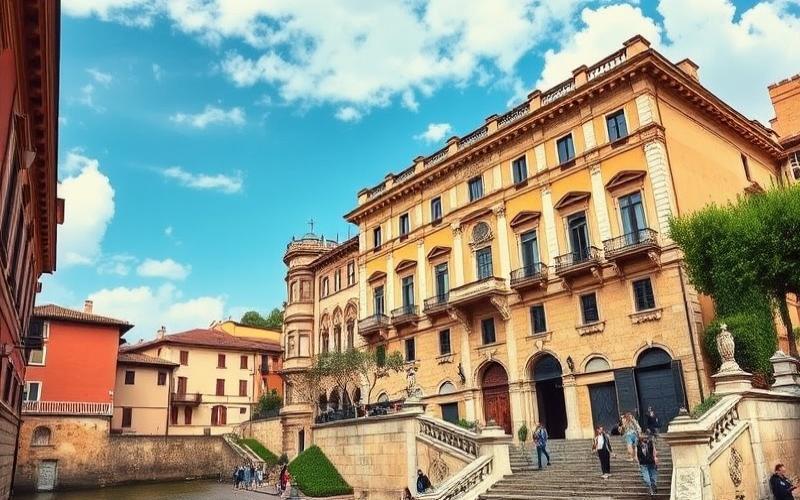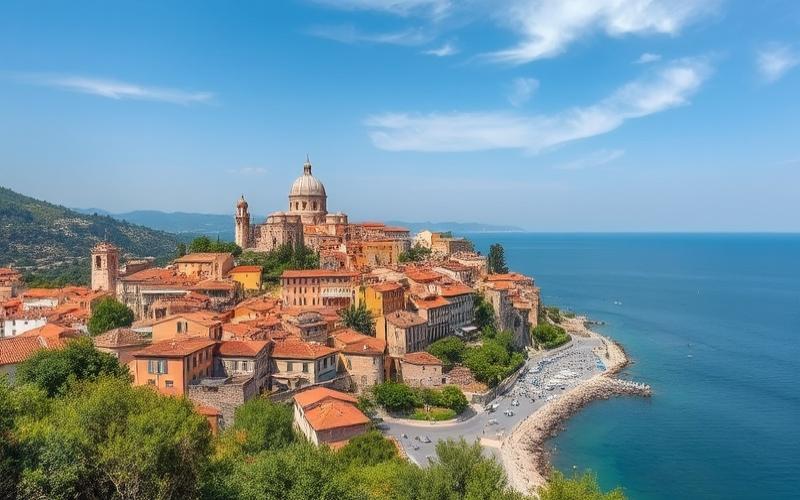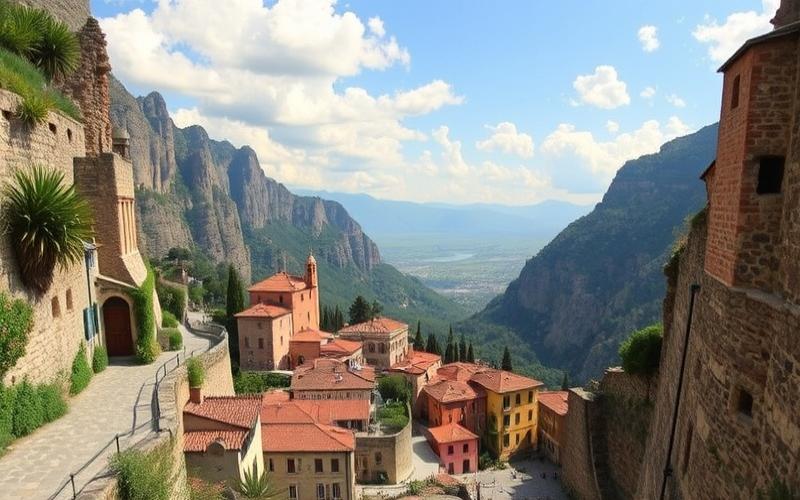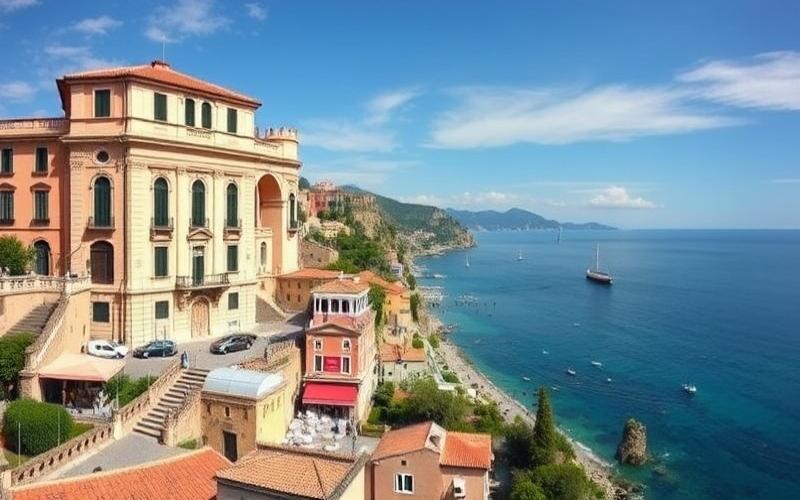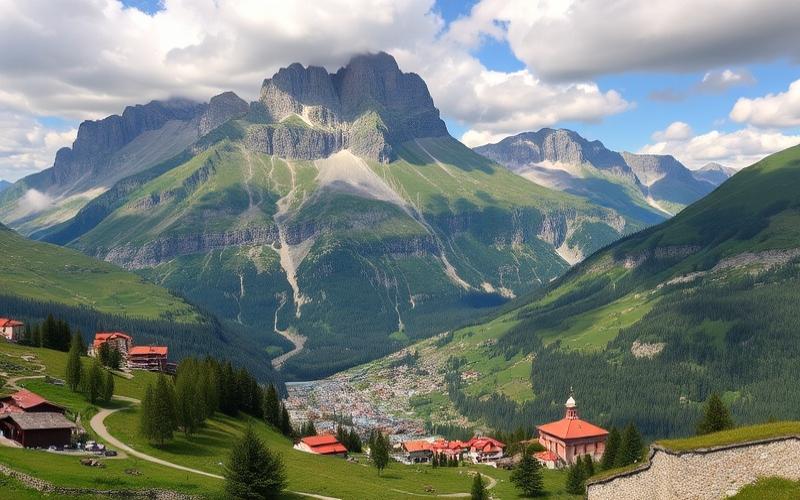
 Published on and written by Cyril Jarnias
Published on and written by Cyril Jarnias
In a world where real estate investment is often perceived as a safe haven, it’s crucial to be well-informed before making a bold choice. Italy, with its unparalleled charm and rich history, attracts many investors eager to own a piece of this Mediterranean paradise. But how does it compare to its European neighbors, often praised for their economic stability and favorable tax systems?
This article provides an illuminating comparison between the Italian real estate market and those of its neighboring countries, offering a detailed overview of the unique opportunities and potential challenges awaiting buyers in these fascinating regions.
Overview of Real Estate Markets in Italy and Its Neighbors
Italy shows a year-over-year increase in residential prices in 2025, driven by the existing property market, despite a slight quarterly decline due to new construction. Transactions are clearly rebounding in Q1 2025 (+11.2% vs Q1 2024), supported by improved financing conditions and receding inflation.
Key Italy Trends
- Prices: +4.4% y/y in Q1 2025 (ISTAT preliminary estimates); -0.2% q/q, with a marked decline in new construction (-8.7% q/q) and an increase in existing properties (+1.7% q/q).
- Average price level: €2,089/m² in Q1 2025, +2.9% y/y; average property price €250,536.
- Activity: transactions +11.2% in H1/Q1 2025 vs 2024; over 172,000 sales in H1, with a marked rebound in Genoa and Turin.
- Credit and rates: more favorable conditions in 2025 with declining rates, stimulating demand.
- Demand/supply: supply almost stable (+0.3%) against sharply rising demand (+18.2%), reducing delays and the gap between listed price and final price.
- Preferences: increased interest in eco-efficient housing and energy efficiency; real estate remains a “safe haven” in a context of macroeconomic volatility.
Most Sought-After Italian Geographic Areas
- Major cities: the 10 largest urban areas record an average price increase of 2.5% in H1 2025.
- Notable transaction accelerations: Genoa and Turin leading in 2025.
- Regional dynamics: sales growth in all regions, including outside major cities.
Economic and Policy Influences in Italy
- Receding inflation and expected slight GDP growth (~0.4%) improve visibility and borrowing capacity.
- Interest rate normalization and easier credit access boost mortgage demand.
- The new construction segment accounts for less than 5% of transactions and declined in Q1 2025, accentuating the role of existing properties in price formation.
France vs Italy
- Price cycle: France experienced a downward adjustment of existing property prices in 2024-2025 in several metropolitan areas, while Italy shows annual growth (+4.4%) driven by existing properties.
- Activity: Italy rebounds in 2025 (+11.2% Q1), while France suffered a sharp decline in transactions in 2024 before gradual stabilization in 2025 (general regional market trend; qualitative comparison).
- Credit: easing rates in both countries in 2025; Italy indicates “more favorable conditions” and strengthened demand, while in France accessibility gradually improves (qualitative comparison).
- Policies/housing: in Italy, focus shifts toward energy efficiency and renovation, with supply growing little (+0.3%); in France, increased energy constraints on rental properties stimulate trade-offs (qualitative comparison).
- Preferences: in Italy, safe haven value and interest in eco-renovation; in France, refocusing on well-located and efficient properties (qualitative comparison).
Spain vs Italy
- Prices: Italy shows moderate growth (+2.9% to +4.4% depending on source and scope); Spain showed price resilience in 2024-2025, but with increases concentrated in coastal and tourist areas (qualitative comparison).
- Activity: Italy shows broad geographical rebound; in Spain, foreign demand remains a pillar of Mediterranean areas (qualitative comparison).
- Credit/rates: improved conditions in 2025 in both countries; in Italy the signal is explicit about rate decreases and increased accessibility.
- Preferences: Italy and Spain share appeal for second homes and tourist rental investment; in Italy, premium focus on energy efficiency and major city dynamism.
Switzerland vs Italy
- Prices: Italy shows annual growth in existing properties and slight weakness in new construction, while Switzerland experienced prolonged price growth with recent heterogeneity (qualitative comparison).
- Credit: Switzerland operates within a strict prudential framework (equity share, amortization), while in Italy accessibility improves in 2025 thanks to easing rates.
- Policies/housing: Switzerland characterized by high proportion of renters and constrained new supply; in Italy, supply is almost stable (+0.3%) but demand surges (+18.2%).
- Preferences: Italy oriented toward safe haven value and energy renovation; in Switzerland, preference for stability, with high sensitivity to mortgage rates (qualitative comparison).
Summary Comparison Table
| Key Indicators (2025) | Italy | France | Spain | Switzerland |
|---|---|---|---|---|
| Recent residential prices | +4.4% y/y Q1 (ISTAT); +2.5% H1 major cities; €2,089/m² average | Downward adjustment 2024 then stabilization 2025 (qual.) | Moderate growth concentrated in coastal/tourist areas (qual.) | Prolonged growth, recent heterogeneity (qual.) |
| Activity (transactions) | +11.2% Q1/H1 vs 2024; >172,000 sales H1 | Decline 2024, gradual normalization 2025 (qual.) | Strong in tourist and foreign markets (qual.) | Tight market, volumes sensitive to rates (qual.) |
| Credit and rates | More favorable conditions; rate decreases | Gradual easing | Gradual easing | Strict prudential conditions |
| Supply vs demand | Supply +0.3%; demand +18.2% | Stagnant supply; demand constrained then recovering (qual.) | Limited supply in hotspots | Constrained new supply |
| Buyer preferences | Safe haven value; energy efficiency; dynamic major cities | Energy performance, prime location | Second homes, rental investment | Stability, high rental proportion |
What Distinguishes Italy from Its Neighbors
- Resilience of existing property prices and rapid transaction rebound in 2025, contrasting with still visible adjustments in France and Spain’s dependence on foreign demand.
- Market structure heavily oriented toward existing stock, with new construction representing a very small share of transactions (<5%).
- Marked transaction rebound in 2025 (+11.2% Q1/H1) with over 172,000 sales H1.
- Supply +0.3%; demand +18.2%.
Good to Know:
The Italian real estate market is experiencing a slight price increase, particularly in tourist areas like Tuscany and major cities such as Milan and Rome, where demand remains high. Meanwhile, historically low interest rates offer interesting opportunities for buyers. In comparison, France shows price stagnation, influenced by structural housing policies and a more rigid credit market. Spain, on the other hand, presents a post-crisis recovery market with increased accessibility to mortgage credit. Switzerland remains a stable but expensive market where purchases are often limited by strict regulations. Buyer preferences also vary: in Italy, the focus is on historical and authentic properties, while in Spain, vacation homes are prized. Recent data shows that the Italian market, although influenced by global economic factors, stands out for its geographical and cultural diversity, giving it a unique appeal for investors compared to its neighbors.
Advantages and Disadvantages of Buying in Italy Compared to Neighbors
Italy stands out with a rare mix of cultural heritage, varied landscapes, lifestyle, and still competitive real estate prices in many regions, while offering good domestic and international connectivity. In return, bureaucracy, certain tax complexities, and administrative delays can be more constraining than in France, Switzerland, Austria, or Slovenia.
Cultural and Historical Framework
- Country with the most UNESCO sites in Europe, with art cities (Rome, Florence, Venice, Naples) and historic towns offering potential for heritage appreciation and cultural rental income.
- Urban and village life centered on conviviality and public space (piazzas, markets), attractive for seasonal charm rentals.
Landscape Diversity
- Multiple coastlines (Liguria, Tuscany, Puglia, Sicily, Sardinia), alpine lakes (Como, Garda, Maggiore), Apennines and Alps for four-season usage (beach, hiking, skiing).
- Purchase opportunities in areas less saturated than the French Riviera or certain Swiss/Austrian lakes, with more affordable entry points outside “trophy assets.”
Gastronomic Wealth
- Dense wine territories and DOP/IGP areas (Piedmont, Tuscany, Emilia-Romagna, Sicily), supporting tourist appeal and experiential rental returns (wine tourism, agriturismo).
- Regional culinary ecosystems favoring off-season stays (truffles, harvests, festivals), smoothing seasonal income fluctuations.
Cost of Living and Real Estate Prices
- Significant price disparities between regions: in the south and certain secondary centers, prices per m² remain substantially lower than France and Switzerland, and often more accessible than Austria in premium alpine spots.
- Maintenance fees and charges often lower than Swiss standards; possibilities to renovate historic properties at low acquisition prices, with value creation potential.
- Taxation: capital gains exemption possible after approximately 5 years of ownership excluding primary residence, shorter horizon than France (longer) and competitive with Germany; attraction schemes for foreigners (e.g., flat tax regimes for repatriates) depending on profile.
Infrastructure and Connectivity
- Efficient high-speed rail network (Frecciarossa, Italo) connecting main northern and central hubs; dense regional line network.
- Multiple international airports (Rome FCO, Milan MXP/LIN/BGY, Venice, Naples, Bologna, Florence, Bari, Catania), facilitating access for short stays and rentals.
- Transalpine highways and Mediterranean corridors connecting France (Liguria/Piedmont), Switzerland (Lombardy/Ticino), Austria (South Tyrol), Slovenia (Friuli-Venezia Giulia).
Key Comparison Points
France
- + Deep and liquid market, strong buyer protections, comparable infrastructure.
- − High prices in comparable areas (Côte d’Azur, alpine resorts), less favorable wealth and capital gains taxation in short/medium term; transaction costs and charges sometimes higher.
Switzerland
- + Macro stability, exceptional legal security.
- − Restricted access for non-residents in primary residential; very high prices per m², local taxation potentially heavy depending on canton; Italy offers lower financial entry with broader heritage stock.
Austria
- + Premium alpine framework, security, clear procedures.
- − Prime alpine markets expensive and sometimes capped by tourist usage quotas; in Italy, more price/yield trade-offs outside alpine hotspots and on coastlines.
Slovenia
- + Compact, stable market, good EU integration.
- − More limited asset depth and diversity; Italy offers broader range (lakes, coastlines, art cities) and larger volumes.
Potential Disadvantages in Italy
Bureaucracy and Delays
Permit procedures, land registry, and compliance of historic properties can lengthen transactions and work; importance of due diligence (urban planning regularity, certificates).
Taxation and Local Charges
Multiplicity of local taxes (e.g., IMU depending on usage), declarative complexity for short-term rentals; need to optimize structure (residence, furnished rental, repatriate regimes).
Market Fragmentation
Strong price/yield variations by micro-market; risk of overvaluation in certain ultra-touristic spots, as also observed in neighbors (Italy/Austria) with compressed yield in high seasonality.
Financing and Renovation
Variable bank requirements for non-residents; costs/delays of renovation in listed old buildings; need for reliable local teams.
Summary Comparison Table
| Criterion | Italy | France | Switzerland | Austria | Slovenia |
| Average prices (excluding hotspots) | More accessible in many Southern/Central regions | Higher on comparable coastlines/Alps | Very high, limited non-resident access | High on prime alpine markets | Generally moderate but smaller market |
| Asset diversity | Very high (lakes, coasts, art cities, countryside) | High | Medium (strong urban/lake premium) | High in alpine areas | Medium |
| Tourism rental yield | Good outside overpriced areas | Good but higher entry price | Often modest vs price | Good in resorts, high ticket | Reasonable, limited supply |
| Capital gains taxation | Exemption possible ~5 years | Long horizon | Canton-dependent | Variable | Variable |
| Bureaucracy | Heavier | Medium | Low to medium | Medium | Low to medium |
| Transport connectivity | Very good (high-speed rail, air hubs) | Very good | Very good | Very good | Good |
Examples and Data to Consider
- Italy vs Switzerland: simpler access to residential stock and significantly lower entry points; certain optimizations for repatriates and possible local IMU reductions depending on areas.
- Italy vs Austria: risk of compressed yield in hyper-touristic areas shared on both sides of the Alps; Italian opportunities in less saturated secondary markets.
- Slovenia: stable framework and low corporate taxation, but less depth and variety of assets than Italy for multi-thematic heritage/rental strategies.
Best Practices for Investing in Italy
- Target undervalued micro-markets: secondary art cities (Bologna, Lecce), less saturated coastlines (Marche, Calabria), non-prime lakes (Iseo, Trasimeno).
- Enhanced due diligence: urban planning compliance, easements, energy performance, rental status; audit of renovation costs/delays.
- Tax and legal optimization: balance residence/rental usage, examine repatriate regimes and IMU impact; patrimonial structuring from the outset.
Italy combines heritage, geographical diversity, lifestyle, and still competitive prices, with solid connectivity. To leverage these advantages compared to neighbors (France, Switzerland, Austria, Slovenia), one must master bureaucracy, tax specificities, and choose micro-locations where the price/yield ratio remains favorable.
Good to Know:
Buying property in Italy offers significant advantages such as its unique cultural and historical setting, with cities rich in heritage like Rome and Florence, plus a diversity of landscapes ranging from the beaches of the Amalfi Coast to the Italian Alps mountains. The world-famous gastronomic wealth adds additional appeal, not to mention that the cost of living and real estate can be more advantageous in certain regions like Puglia compared to its neighbors. Italy benefits from well-developed infrastructure and good connectivity with the rest of Europe thanks to its international airports and high-speed rail network. However, the Italian real estate market presents challenges, including often complex bureaucracy and a tax system that can be perceived as heavy by foreign buyers, contrasting with possibly simpler or more favorable systems in France or Switzerland. Slow administrative procedures and certain tax uncertainties are disadvantages that can make purchasing less attractive than in Austria or Slovenia, where regulation may be clearer and more predictable.
Comparison of Real Estate Taxation Between Italy and Neighboring Countries
Property taxes in Italy are characterized by a combination of recurring taxes (IMU, TASI integrated/abolished depending on periods), residence taxes, and acquisition duties, with notable relief for primary residences and specific taxation on rental income; comparatively, France applies high local taxation (property tax), abolished residence tax on primary homes, and heavily taxes transfers, while Switzerland and Austria modulate more at local/cantonal level or through specific scales, and Slovenia falls within a generally more moderate range, although less documented publicly in recent French-language sources.
- Italy
- Annual taxes: IMU due on secondary residences and certain properties; primary residence largely exempt (excluding luxury categories). Rental income may be subject to progressive IRPEF (23-43%) or a flat tax called “cedolare secca” for non-residents at approximately 21% on gross rents, an option that simplifies and may reduce the effective burden.
- Acquisition: registration tax 2% for primary residence, 9% for secondary residence; notary fees approximately 1-2%; total transfer costs typically 9-10%.
- Capital gains: exemption if property held more than 5 years, or if used as primary residence for at least one year before sale.
- Foreign investors: rather neutral to favorable policy via rental flat tax and quick capital gains exemption (5 years), supporting long-term rental investment; acquisition duties on secondary properties (9%) are a deterrent for short-term strategies.
- Market impact: high entry costs on secondary properties encourage long holding horizons; primary residence exemption supports homeownership; rental flat tax makes yields more predictable for landlords.
- France
- Annual taxes: high and rising property tax in many municipalities; residence tax abolished on primary residences but maintained/penalized for secondary residences depending on municipality; social contributions of 17.2% added to rental income in addition to income tax (20-30% typical for average incomes).
- Acquisition: among the highest transfer costs in Europe, typically 7-8% of price (duties ~5.8%, notary 1-2%, ancillary fees).
- Capital gains: tax exemption after 22 years and social contributions exemption after 30 years; maximum rate approximately 31.3% before allowances.
- Foreign investors: deterrent transfer and holding costs (property tax + social contributions) for net yield; legal stability and deep market remain attractive for long-term heritage.
- Market impact: high acquisition costs slow turnover; rental taxation and social contributions compress net yields, steering toward furnished/ specific regimes or long holding.
- Switzerland
- Annual taxes: property tax and rental income at cantonal/municipal level, average rates around 33% on real estate income, with broad deductibility; absence of social contributions on rents; primary residence often exempt from capital gains depending on canton; wealth tax at cantonal level (e.g., Geneva ~0.3-0.8% on net base).
- Acquisition: transfer duties variable by canton, often lower than France; no national social contributions on real estate income.
- Capital gains: exemptions after variable duration by canton; frequent sales taxed more heavily (cantonal speculation tax).
- Foreign investors: competitive cantonal framework, broad deductions and absence of social contributions favorable; purchase restrictions for non-residents under Lex Koller may limit access to certain residential properties (policy point, not quantified here).
- Market impact: stable and deductible taxation supports professional rental investment; cantonal modulation creates local disparities in net yield.
- Austria
- Annual taxes: property tax approximately 0.2% p.a., with relative cap based on official value potentially up to 5 times property value according to regional comparative indications.
- Acquisition: transfer tax 3.5% and land register fees 1.1%, providing total entry cost often lower than France and Italy.
- Capital gains: specific regime; exemptions/reductions possible in family transfers.
- Foreign investors: moderate acquisition costs and stable legal framework attractive; certain cities may regulate short-term rental, affecting strategy (context element, not quantified here).
- Market impact: moderate entry duties favor liquidity; low property tax supports long holding.
- Slovenia
- Annual taxes and acquisition: limited recent French-language public information in consulted results; in practice, Slovenia applies a real estate transaction tax (transfer tax) and capital gains tax with allowances based on duration, and local property tax, generally at levels below France but variable by municipality (prudent inference based on regional frameworks; quantitative data not available in cited sources).
- Foreign investors: smaller market sensitive to local policies; entry costs often moderate compared to Italy/France, but access and regulation may vary (prudent inference).
Examples and Quantitative Comparisons
- Purchase of €300,000 secondary residence:
- Italy: registration tax 9% = €27,000; notary 1.5% ≈ €4,500; total transfer ≈ €31,500 (~10.5% with ancillary fees).
- France: duties ~5.8% = €17,400; notary 1.5% ≈ €4,500; ancillary fees 0.5% ≈ €1,500; total ≈ €23,400 (~7.8%).
- Austria: transfer tax 3.5% = €10,500; register 1.1% = €3,300; total ≈ €13,800 (~4.6%).
- Switzerland: duties variable by canton, often lower than France; indicative total frequently below 5-6% depending on canton (qualitative estimate based on relative comparison).
- Unfurnished rental, €12,000 annual rent (excluding charges), individual owner:
- France: income tax 20-30% + social contributions 17.2% on net income after charges; possible marginal burden >30% of gross depending on limited deductibility.
- Italy: “cedolare secca” flat tax option ~21% on gross rents for non-residents; otherwise IRPEF 23-43% on net.
- Switzerland: cantonal scale, average reported rate ~33% but with broad deductibility and no social contributions, potentially reducing effective rate on net.
- Capital gains on resale:
- Italy: exemption after 5 years ownership or if primary residence one year before sale.
- France: tax exemption after 22 years, social contributions after 30 years; max rate approx. 31.3% before allowances.
- Switzerland: exemption after variable duration by canton; heavier taxation in case of quick resales.
- Austria: specific scales and exceptions in family transfers.
Summary Comparison Table
| Country | Key Recurring Taxes | Typical Acquisition Duties | Capital Gains (Exemption) | Investor Particularities |
|---|---|---|---|---|
| Italy | IMU on secondary; primary residence largely exempt | 2% PR, 9% SR + notary 1-2% (total 9-10%) | >5 years or primary residence (≥1 year) | Rental flat tax ~21%; high entry costs on SR |
| France | High property tax; residence tax abolished on PR | 7-8% total (duties ~5.8%, notary 1-2%) | 22 years (tax), 30 years (SC) | SC 17.2% on rents; compressed net yields |
| Switzerland | Cantonal/municipal, broad deductibility; no SC | Variable, often lower than France | Variable by canton; PR often exempt | Deductible taxation; possible purchase restrictions |
| Austria | Property tax ~0.2% p.a. | 3.5% transfer + 1.1% register | Exemptions in special cases | Moderate entry duties, stable market |
| Slovenia | Local (limited data) | Moderate transfer (limited data) | Allowances based on duration (limited data) | More restricted market (limited data) |
Points of Vigilance and Interpretation
- Swiss and Austrian figures vary strongly by canton/Länder and special cases; always verify locally before decision.
- Transfer costs in Italy differ significantly between primary and secondary residence; the gap modifies acquisition strategy.
- In France, the addition of social contributions on rents and capital gains strongly changes the net yield hierarchy compared to Switzerland/Italy.
Key takeaway: for a foreign investor seeking net rental yields and simple taxation, Switzerland (depending on canton) and Italy with cedolare secca are generally more favorable than France; for low entry costs and increased liquidity, Austria stands out; France, despite high entry costs/social contributions, offers a deep market and appreciated legal security.
Good to Know:
In Italy, the property tax (IMU) can represent up to 0.6% of the cadastral value with possible deductions for primary residence, while in France, combined property and residence taxes can approach 1% of the property value, with exemptions for modest incomes. Switzerland, with its property tax often below 0.5%, offers attractive rates for foreigners in certain cantons, although taxes vary considerably. In Austria, the property tax is generally lower than in other countries, with a typical rate of 0.2%, but remains limited in terms of deductions. Finally, Slovenia offers a tax in the range of 0.15%-0.5% of the cadastral value, with some exemptions. Italian policies are sometimes considered deterrent for international investors due to administrative complexity, while France offers attractive tax schemes like the Pinel system. The tax conditions of each country can strongly influence real estate investment profitability, with Swiss examples showing that low property taxes combined with economic stability particularly attract foreign investors.
Disclaimer: The information provided on this website is for informational purposes only and does not constitute financial, legal, or professional advice. We encourage you to consult qualified experts before making any investment, real estate, or expatriation decisions. Although we strive to maintain up-to-date and accurate information, we do not guarantee the completeness, accuracy, or timeliness of the proposed content. As investment and expatriation involve risks, we disclaim any liability for potential losses or damages arising from the use of this site. Your use of this site confirms your acceptance of these terms and your understanding of the associated risks.

